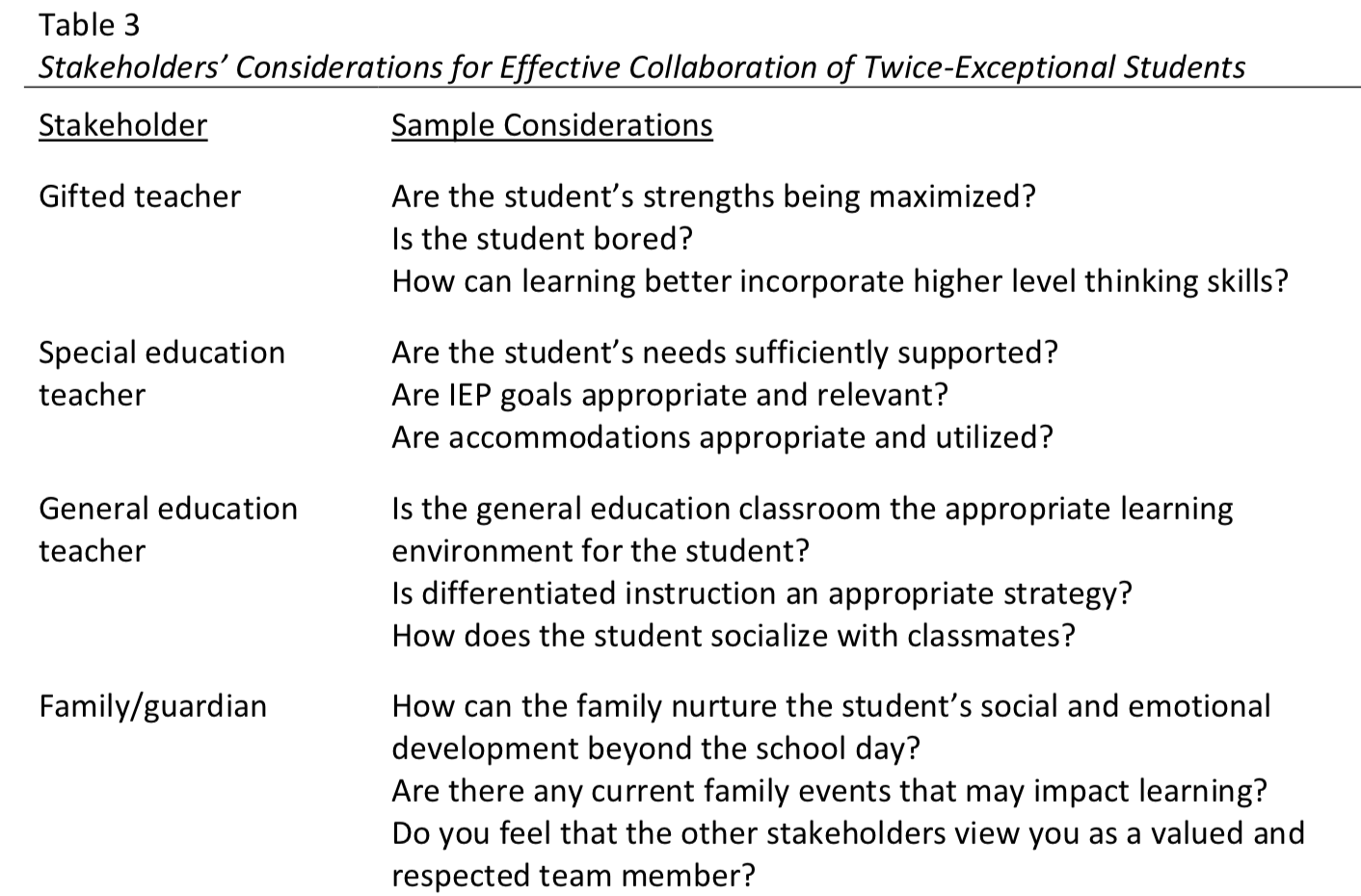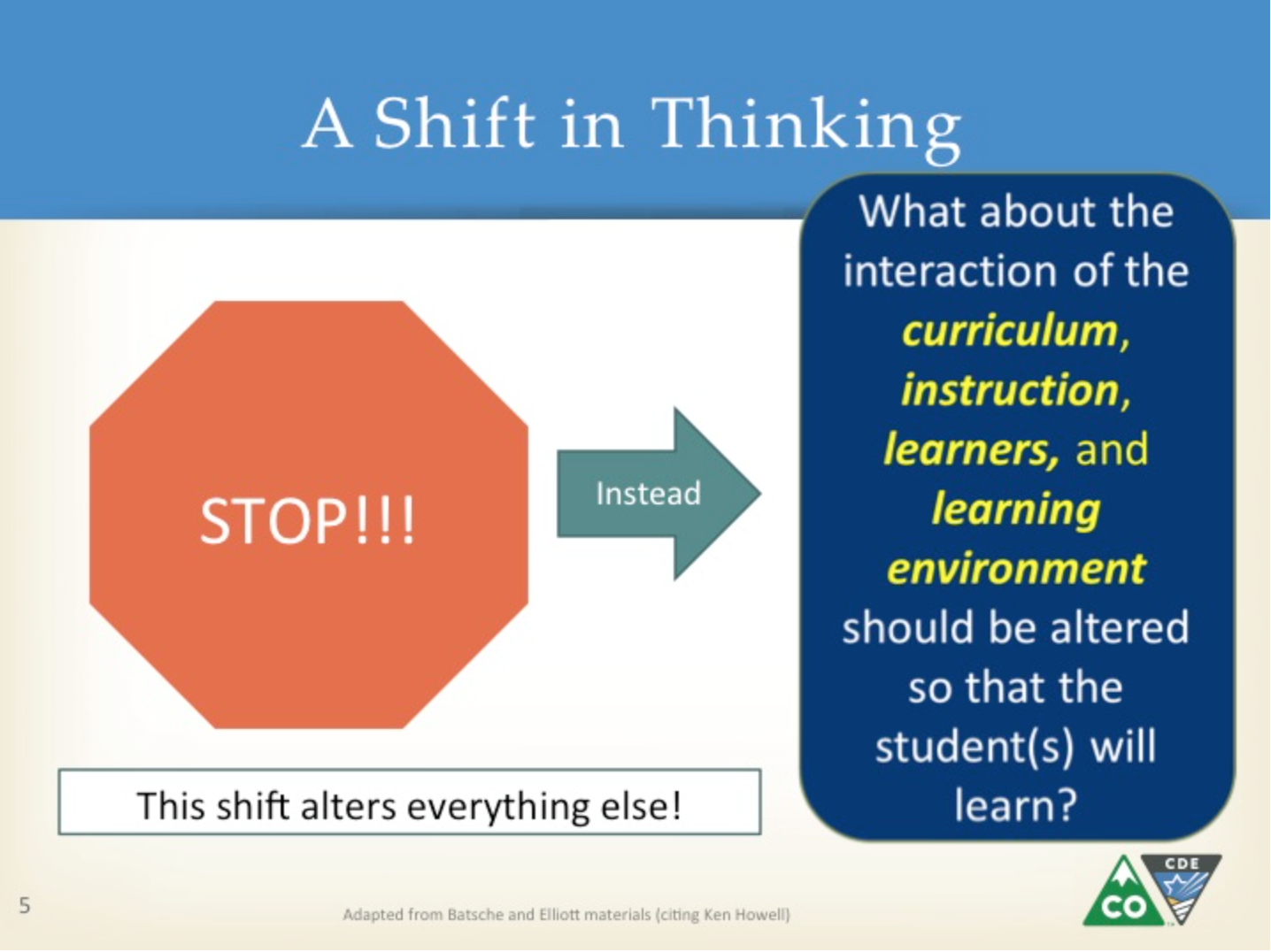Lesson 8: Putting It Altogether for the Twice-Exceptional Student
Collaboration
Collaboration can help classroom teachers decipher between 2e students and gifted underachievers. The needs of 2e students can be best supported when special educators, gifted support personnel, and families exercise collaboration (Coleman & Gallagher, 2015). Our goal is to serve the needs of all twice-exceptional students to make certain they receive programming that allows them to recognize their strengths and support their challenges.
Collaboration in planning and instruction for 2e students should be prioritized in schools (Coleman & Gallagher, 2015). The problem-solving team for 2e students should not only include the learning support teacher who provides remediation, but also the designated provider of gifted services. These two professionals should work together to provide a balanced program that addresses the student’s disability while also providing the appropriate level of challenge and opportunity in the areas of giftedness (Baldwin, Baum, Pereles & Hughes, 2015). Although we strive to address strengths before needs as recommended in the research, aiming for a balanced approach calls for many hands. Table 3 lists some common considerations for various stakeholders that may serve as the foundation for deep and relevant collaboration and planning. Strategies for Supporting Students Who Are Twice-Exceptional by Janet Josephson, Charlton Wolfgang, Rich Mehrenberg The Journal of Special Education Apprenticeship, June 2018.
Areas to Collaborate:


Strategies for Supporting Students Who Are Twice-Exceptional by Janet Josephson, Charlton Wolfgang, and Rich Mehrenberg. THE JOURNAL OF SPECIAL EDUCATION APPRENTICESHIP, 7(2)(2018)
In their article: Meeting the Needs of Students With 2e: It Takes A Team, Mary Ruth Coleman and Shelagh A. Gallagher emphasize the need for flexible, multidimensional, customized supports and services for 2e that require a system of education that is capable of dynamic and personalized interventions that respond to a 2e student's learning strengths and challenges. They believe that this kind of educational response entails more than an excellent individual teacher...it takes a team. Gifted Child Today, October 2015 https://www.researchgate.net/publication/283875493
Supporting twice-exceptional students in the MTSS process may involve a shift in thinking:
- Articulate how MTSS can be used to identify a twice-exceptional student.
- Define and use strength-based programming within an MTSS format to develop an educational plan for a 2X student.
- Collaborate with others to develop an educational plan for a 2X student.

Benefits of MTSS
- Early intervention at the first sign of difficulty without “wait to fail"
- Resources can be pooled (e.g., Reading Recovery, Title I, and special education funds can be used to provide intense interventions)
- Focus will be on student needs - not the disability label
Mary Ruth Coleman, 2004
Meeting Diverse Needs: Collaboration
Twice-exceptional students have learning needs related to both their exceptionalities. To meet the diverse needs of 2X students, a collaborative effort is needed between:
-
-
-
- Classroom teachers
- Gifted education and special education staff
- Parents
- Students
- Community resources
-
-
The Importance of Collaboration
- Expectation of shared responsibility and goal setting
- Varied perspective on identifying twice exceptional student needs
- Developing consensus about instructional decisions for programming options, interventions and available resources
- Collective progress monitoring and data collection
- Community of support for the student